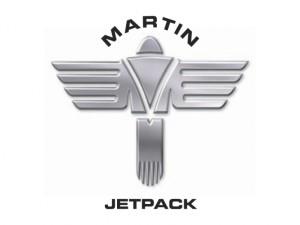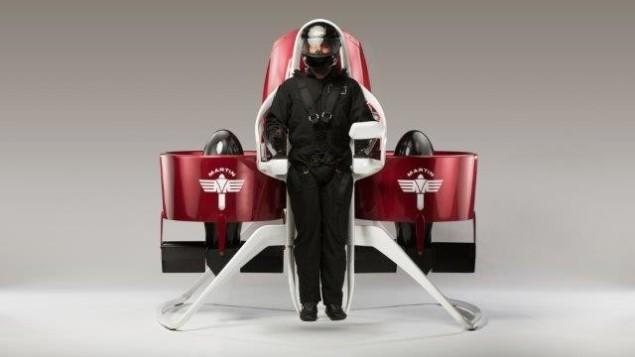 Much like a transporter or a flying car, the jetpack has always been a staple in the world of science fiction. Sadly, reality has problems with strapping a rocket to a person’s back and launching them head first into things. Not to mention all of the melting of flesh that a rocket aiming at your legs would cause. Basically, jetpacks, as they have always been envisioned, are probably not a good idea. But that didn’t stop New Zealand’s Glenn Neal Martin from spending thirty years developing his dream aircraft anyway.
Much like a transporter or a flying car, the jetpack has always been a staple in the world of science fiction. Sadly, reality has problems with strapping a rocket to a person’s back and launching them head first into things. Not to mention all of the melting of flesh that a rocket aiming at your legs would cause. Basically, jetpacks, as they have always been envisioned, are probably not a good idea. But that didn’t stop New Zealand’s Glenn Neal Martin from spending thirty years developing his dream aircraft anyway.
At this week’s Dubai Airshow–where the world’s first 3D printed jet-powered UAV also took to the skies–Martin and his company Martin Aircraft announced that they have made a deal to sell twenty of the world’s first commercial ready jetpacks for delivery next year. Their first customer for the Martin Jetpack was the Civil Defence Operations Department of Dubai, for use in reconnaissance and rescue operations. There were no specific financial details about the sale announced, but the Jetpack has a sticker price of $250,000 each. The deal also includes a flight simulator and a full operator training package.
While the Martin Jetpack certainly looks like a lot of fun to fly, don’t hold your breath waiting for the chance to buy one yourself. These will most likely not be a toy for the rich and famous, at least not yet; they were actually designed to replace helicopters in search and rescue operations, first responder operations and certain military applications. The super lightweight jetpack is smaller and far more maneuverable than a helicopter and can weave in and out of city blocks and between buildings with ease. Dubai for instance is planning on using them to combat fires that may start in one of the nation’s many skyscrapers.
“We see them performing a first-responder role. Sometimes we have challenges or difficulties to reach the top floors of those buildings. The aircraft can go into confined spaces to size-up the situation. We are going to modify them with thermal imaging cameras,” explained Lt Col Ali Hassan Almutawa, director of the Dubai Civil Defence Operations Department.
The Martin Jetpack is an ultra-lightweight personal vehicle with a body constructed from 3D printed and carbon fiber components. It’s powered by a two-liter, two-stroke 200hp V4 engine and is capable of a top speed of 45mph and a maximum payload of 265 pounds. The jetpack can reach altitudes up to 3,000ft, and has a maximum flight time of about 45 minutes. There is an onboard computer system that will automatically maintain the craft’s stability, so if the operator lets go of the joystick controller it will simply hover in place until re-engaged. There is also a high-powered emergency parachute that will deploy quickly and is capable of bearing the weight of the entire jetpack and the operator.
 It should be noted that “jetpack” is a bit of a misnomer as it doesn’t really have a jet engine on it. Instead the Martin Jetpack uses a pair of ducted fans that provide lift and propulsion. In reality it has a lot more in common with a small, personal helicopter than what a jetpack was traditionally conceived as. For the moment New Zealand’s Civil Aviation Authority has certificated the Martin Jetpack as a microlight vehicle, but the company is working closely with the regulator to create a unique and more specific classification for the type of vehicle that it is.
It should be noted that “jetpack” is a bit of a misnomer as it doesn’t really have a jet engine on it. Instead the Martin Jetpack uses a pair of ducted fans that provide lift and propulsion. In reality it has a lot more in common with a small, personal helicopter than what a jetpack was traditionally conceived as. For the moment New Zealand’s Civil Aviation Authority has certificated the Martin Jetpack as a microlight vehicle, but the company is working closely with the regulator to create a unique and more specific classification for the type of vehicle that it is.
Here is a video of the Martin Jetpack in action:
While the company is currently focusing on selling the jetpack to emergency services departments and the military, they are not ruling out private ownership. However, it is very likely that countries would need to heavily regulate the jetpacks’ usage and licensing. Martin Aircraft is also developing an unmanned version that would be controlled similarly to a drone. It could be used to deliver payloads of medical supplies, food and replacement parts for damaged equipment, or even remote flown to a pilot for emergency extraction.
Discuss this story in the Martin Aircraft Jetpack forum thread on 3DPB.com.
Subscribe to Our Email Newsletter
Stay up-to-date on all the latest news from the 3D printing industry and receive information and offers from third party vendors.
You May Also Like
3D Printing Webinar and Event Roundup: April 14, 2024
We’re starting off the week’s 3D printing webinars and events at ASTM AMCOE’s 11th Snapshot Workshop and MACH Exhibition. Stratasys continues its advanced training courses, SME is holding a virtual...
Westinghouse Achieves Serial 3D Printing of Nuclear Power Part
According to the “Additive Manufacturing in the Energy Sector: Market Analysis & Forecast” report from Additive Manufacturing Research (AMR), the energy sector saw $2.6 billion worth of 3D printing activity...
New EOS M 290 1kW Enables Copper 3D Printing for New Space, Automotive, and More
EOS has released a new EOS M 290 1kW metal powder bed fusion (PBF) system, designed specifically with copper in mind. Initially developed by its custom machine building subsidiary, AMCM,...
What’s Next for Additive Manufacturing Materials?
As many additive manufacturing (AM) users and engineers know, material science is just as important as the industrial 3D printing technology itself. Both work in tandem to help manufacturers reach...































